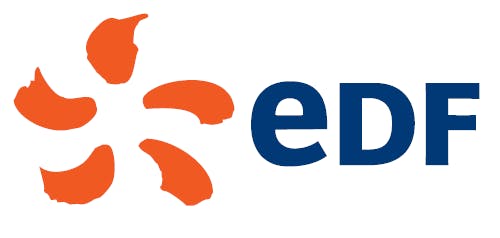3.1 Carbon neutrality and the climate
3.1.4 Developing low electricity consumption and innovative energy services3.1.3.6 Innovation and R&D for the energy transition
As of the end of 2022, EDF R&D had a headcount of 1,747 in France; most of its budget is earmarked for energy and climate transition (1).
Breakdown of R&D investments by technology
99% of EDF R&D’s operating budget in France is dedicated to decarbonation and the energy systems transition. In particular, expenditures covered energy efficiency, uses of electricity as a substitute for fossil fuels, renewable energies and their insertion into the grid, energy production and storage, low-carbon hydrogen and its applications for decarbonising the economy, the local impacts of climate change and other environmental issues such as biodiversity, water quality, and the mitigation of disturbances. Nuclear power accounts for 42% of EDF R&D; renewable energies account for 14%.
Action undertaken in respect of decarbonation and energy sobriety
EDF R&D is working on the issue of far-reaching decarbonation in industry. Following the application of France’s new RE2020 energy legislation in 2021, EDF R&D has been engaged in co-development work on heat pump solutions with manufacturers in order to broaden this offering. EDF R&D is also actively engaged in supporting the Group’s business units as they address household demand for construction and renovation to produce lower-carbon homes.
The energy transition also involves exploring innovative solutions within the EDF Pulse ecosystem (see section 3.3.3.6.7 “Developing a culture of innovation: the EDF Pulse ecosystem”),
3.1.4 Developing low electricity consumption and innovative energy services
A key source of leverage for decarbonisation
With largely low-carbon electricity, the development of uses of low-energy, innovative electricity uses and services is a key vector for work to combat global warming.
Developing appropriate offerings
The EDF group is contributing to this goal by means of offers tailored to various markets, including promoting the use of heat pumps, electric mobility, and energy
efficiency solutions. See section 3.1.4.3 “Developing efficient, low-energy, innovative energy services”.
Establishing the conditions for the development of innovative and effective low-energy uses
Electrifying sectors that produce the most CO2 entails having conditions that are favourable to this development. See section 3.1.4.2 “Setting the conditions for the efficient development of sober electricity uses”.
3.1.4.1 Commitment to supporting customer decarbonisation
GROUP KEY PERFORMANCE INDICATOR
One of the key indicators in combatting global warming is the quantity of CO2 emissions avoided. To date, there is no recognised external reference that can be used to determine the amount of emissions avoided by customers thanks to the products and services EDF sells. However, EDF can follow principles for such calculations according to the most frequently observed practices in this respect. At the same time, EDF is engaged in French and international research seeking to develop this type of benchmarking method. The aim is to avoid 30 million tonnes of CO2 emissions by 2030 (2).
The 2022 results cover only some of the products and services marketed by EDF. The figures should increase in the coming years, subject to possible changes in method in order to remain in line with third-party practices.
Avoided CO2 emissions thanks to sales of innovative goods and services (in MtCO2)

This graph shows the avoided CO₂ emissions thanks to sales of innovative goods and services (in MtCO₂).
2020: -
2021: 4.4*
2022: 11.4
Target 2030: >30
(1) See section 1.5 Research & development, patents and licences.
(2) The target has been doubled compared to 2021 due to the increase in both geographical and functional scopes; for more details, see section 3.6.3.4 “Details of performance indicators (KPI)”.
